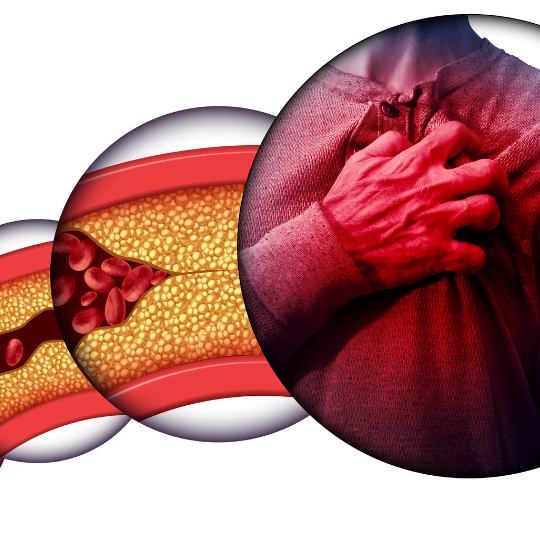“Prevention is better than cure!”
This proverb is probably very old, but our compounding pharmacy (Chaparral Pharmacy – Remedy’sRx) believes that it is still very effective.
These days, any pharmacy within Calgary or Canada should not only assume the reactive role, that is, providing medications, supplements, and services for those who are already sick. Pharmacies worldwide – and not only in Calgary – should work with other healthcare professionals and educate people with state-of-the-art research to provide early prevention against chronic diseases and serious illnesses.
Many diseases and illnesses are highly dependent on our genetics and lifestyles. However, by knowing the diseases that we are prone to and their risk factors, then by applying the proper mitigations for each disease, we could be able to decrease the likelihood of those diseases.
Should we learn about every possible disease/illness under the sun?
The answer is NO.
That is why we took the approach of illustrating possible diseases/illnesses based on the area of residence and depending on extensive data provided by the Government of Alberta.
Our compounding pharmacy has undertaken the mission of improving the health and wellness of all Calgary residents to enable a better future for all of Calgary, and hence Alberta and Canada.
You can check the full data from this webpage, but since Chaparral Pharmacy – Remedy’sRx appreciates your time, we will brief you on the outcome of some important points of those lengthy reports here on our website.
Those articles would concentrate on the chronic diseases and disorders, and mortality causes in each area within Alberta with emphasis on Calgary.
What is the expected benefit of these educational articles?
Each article will briefly discuss the medical conditions of a certain area(s) within Calgary. Specific recommendations will be made on how to avoid or decrease the likelihood of those chronic diseases and mortality causes.
Since Chaparral Pharmacy – Remedy’sRx is located in the Chaparral community, Calgary, we will begin with chronic and serious diseases within our area. Although our area is east of Macleod Trail, it is included in the survey of the Calgary Southwest (SW) area, according to the Government of Alberta.
This article would include most of the south area of Calgary, including the Calgary Fish Creek area. Therefore, the area covered in this article are Calgary SE, Calgary SW, and Calgary Fish Creek.
According to the Government of Alberta, the Calgary SE area includes the following communities: Forest Lawn, Dover, Ogden, Riverbend, Quarry Park, McKenzie Towne, McKenzie Lake, Mountain Park, New Brighton, Copperfield, Inverness, Cranston, Auburn Bay, Mahogany, and Seton.
The Calgary SW area includes the communities of Evergreen, Evergreen Estates, Shawnee Slopes, Millrise, Midnapore, Sundance, Shawnessy, Bridlewood, Silverado, Chaparral, Walden, and Legacy.
The Calgary Fish Creek area contains the communities of Woodbine, Woodlands, Braeside, Southwood, Haysboro, Lake Bonavista, Deer Ridge, Willow Park, Acadia, Douglasdale, Queensland, Diamond Cove, Fairview, Kingsland, and Alyth-Bonnybrook-Manchester communities.
Chronic Diseases in the different aforementioned Calgary communities:
Hypertension (High blood pressure)
Hypertension or high blood pressure is the presence of too much pressure in your blood vessels. It can go on for years without being noticed, as it does not have obvious symptoms in many cases. If not treated, hypertension could cause many illnesses, including stroke, kidney failure, and heart attacks.
For the Calgary SE area, the rate of people who got hypertension was 19.8 persons per 100 persons.
For the Calgary SW area, the rate of people who got hypertension was 19.5 persons per 100 persons.
For the Calgary Fish Creek area, the rate of people who got hypertension was 19.1 persons per 100 persons.
Diabetes
Diabetes (or Diabetes mellitus) is a metabolic disorder that describes the presence of too much sugar in your blood due to the inability of the pancreas to produce enough insulin (or even any insulin at all) to counter the excess blood sugar. If left untreated, Diabetes could produce long-term bad effects on the patient’s cardiovascular system. In addition, other complications could be developed, such as problems in the eyes, kidneys, nerves, and problems in wound healing (patients might not feel pain when wounded, which may cause infections and even gangrenes!).
For the Calgary SE area, the rate of people who got diabetes was 6.7 persons per 100 persons.
For the Calgary SW area, the rate of people who got diabetes was 6.3 persons per 100 persons.
For the Calgary Fish Creek area, the rate of people who got diabetes was 6.1 persons per 100 persons.
Ischemic heart disease
It is characterized by the narrowing of the heart arteries, which may lead to decreased blood flow to the heart. Another name is coronary heart disease. Decreased blood flow to the heart is the sure way to have a high probability of heart attacks (i.e. blocking heart arteries (or arteries), which may lead to heart damage).
For the Calgary SE area, the rate of people who got ischemic heart disease was 3.8 persons per 100 persons.
For the Calgary SW area, the rate of people who got ischemic heart disease was 3.8 persons per 100 persons.
For the Calgary Fish Creek area, the rate of people with ischemic heart disease was 3.9 per 100 persons.

Chronic obstructive pulmonary disease
It is an inflammatory lung disease that may prevent proper airflow from and to the lungs. The disease could increase the risk of heart disease or lung cancer. Smoking and fumes could cause chronic obstructive pulmonary disease.
For the Calgary SE area, the rate of people with chronic obstructive pulmonary disease was 2.2 per 100 persons.
For the Calgary SW area, the rate of people with chronic obstructive pulmonary disease was 2.1 per 100 persons.
For the Calgary Fish Creek area, the rate of people with chronic obstructive pulmonary disease was 2.6 per 100 persons.
Risk factors:
- Hypertension (High blood pressure)
- Females, especially women after 65, are usually more prone than men to hypertension. In addition, the hormonal swings happening to women throughout their life during many periods, such as pregnancy, birth control, and menopause, could increase the chance of getting hypertension.
- Bad lifestyle choices: no exercise, bad diets
- Family history
- Diabetes (especially for type 2)
- 40 years or over
- Family history
- High blood pressure
- Overweight
- Had pregnancy diabetes before
- Gave birth to a baby that weighed over four kilograms at birth
- A member of a specific ethnic group that is statistically prone to diabetes (African, Arab, Asian, Hispanic, Indigenous or South Asian descent)
- Ischemic heart disease
- Overweight
- Smoking
- Excessive alcohol and drug abuse
- Inadequate physical activity
- Stress
- Chronic obstructive pulmonary disease
- Smoking especially cigarettes
- Exposure to dust (coal, grain, etc.) and fumes
- Air pollution
- The genetic lack of alpha-1-antitrypsin protein, which is normally found in the lungs
How could we decrease the likelihood of those diseases, illnesses and disorders?
It is surprising that even genetic susceptibility to diseases could be suppressed and decreased by performing some measures and mitigating day-to-day things that individuals could simply (but not easily) control. Some of the controllable measures are:
- For Hypertension (High blood pressure)
- Maintain a healthy weight and monitor the inches around your waist
- Exercise regularly
- Decrease alcohol intake to minimal
- Cease smoking
- Maintain healthy diet
- Work on your stress levels
- Continuous monitoring of blood pressure
- Control and assess the effect of caffeine on your blood pressure
- Keep your sodium intake in-check
- Perform regular check-ups
- Limit processed food intake
- Diabetes (in addition to the actions listed under hypertension)
- Decrease sugar and refined carbs intake
- Drink water (may lead to better blood sugar control and improve your body’s response to insulin)
- Avoid inactivity throughout your day (even if you exercise later in the day!)
- Eat a diet high in fibre
- Drink coffee or tea!
- Take your vitamin D
- Ensure that you take your daily needs of Omega-3, 6, and 9 fatty acids
- Ischemic heart disease (in addition to the measures mentioned above)
- Keep your diabetes (if any) under control
- Plan your work to take frequent breaks to avoid stress
- Maintain a work-life balance
- Chronic obstructive pulmonary disease
- Avoid smoky conditions
- Avoid smoking
- Avoid second-hand smoking
- Monitor your work condition for any air pollutants or contaminants
To conclude, we hope that you enjoyed this article. If you have any questions, please call us at our SE Calgary location at 403-475-5544 and our professional, compounding pharmacists will answer all of your questions.
Thanks for reading this blog post. If you like it, please share it using the buttons below with your friends, family, and colleagues.




